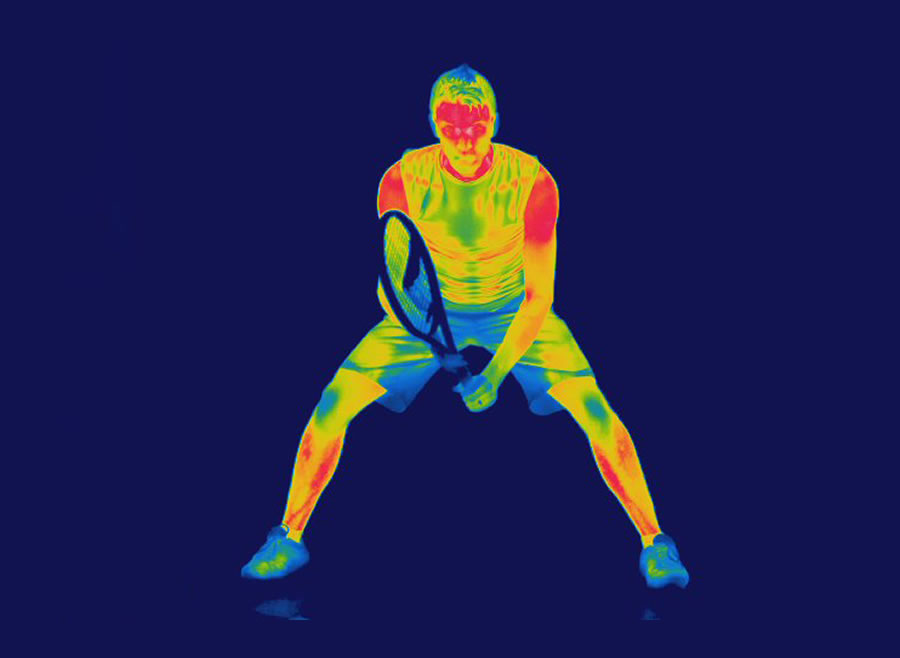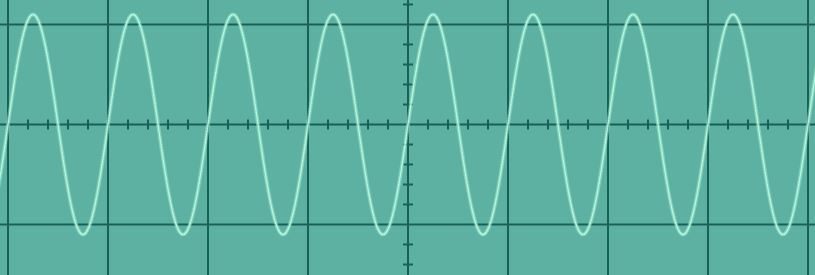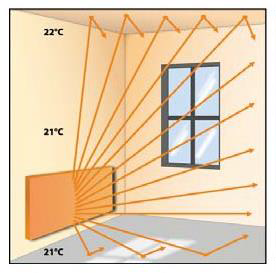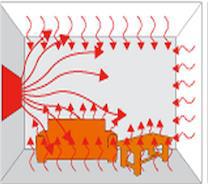From the earliest days of human existence, infrared has kept us out of the cold. Across the inhospitable vacuum of space, infrared heat from the sun warms the planet, creating life and keeping us alive. Today, infrared provides heat for our homes, patios, and across a multitude of commercial spaces. But what exactly is infrared? It’s a term we’ve all heard, whether from TV shows featuring night-time police chases or from GCSE science lessons. But how does it work? What can you use it for? And why should you consider infrared over traditional heating methods? With so many questions and a minefield of complex-sounding terminology, we thought it was about time to demystify infrared heating. The veil is about to be lifted on one of the most efficient and versatile forms of heat we have at our disposal.
In simple terms, what is infrared?
For heating purposes, infrared is the name applied to heat that travels as radiation. Not the scary radiation – we don’t need yellow overalls or Geiger counters here. Radiation as in, heat which radiates outwards from a specific point. Bonfires, the sun, our own bodies, everything and anything emits some degree of radiated heat. When our early ancestors huddled by fires, they were in fact being warmed by the same type of radiated heat that we are today.
Take a look at the image below: it uses thermal imaging to illustrate our point. Objects that emit high levels of radiated heat appear white, red, and orange. Like our skin, bodies, or direct heat sources like an open flame. Objects that emit low levels of infrared heat appear in blue or black. Notice how there isn’t a colour-less object in the image? That’s because, according to something called ‘black body radiation law’, all objects with a temperature above absolute zero emit infrared radiation. Absolute zero, by the way, is physically impossible to reach at minus 273.15°C. To put that into perspective, the coldest temperature ever recorded on Earth was minus 80°C – courtesy of a 1980s Russian research station based in Antarctica. Believe it or not, according to ‘black body law’, at minus 80°C, you’d still emit enough infrared heat to show up on a thermal imaging camera!

Electric infrared heaters create infrared radiation using electricity. A heating element, often a bulb or wire, draws electrical power from the mains. This electricity warms up the bulb or wire, creating infrared heat which is then directed out in a straight line from the heater. Simple, effective, and most importantly warm, modern infrared heaters use the same primordial principal that our ancient ancestors used when huddling around fires to keep warm. The only difference is – 21st century fire plugs into the wall!
The science behind infrared
But what actually is infrared? We know it creates heat, and we know it’s pretty much ubiquitous. But what physically is it? Well, infrared is a form of electromagnetic radiation, which means it has a place on the high-school favourite: the electromagnetic spectrum. I hope you’ve kept your school books? Alternatively, we’ve included a handy image for you below.
The electromagnetic spectrum contains different varieties of radiation. At one end lies the dangerous kind, gamma rays and x-rays. The other end contains harmless radiation, radio-waves and infrared. All of these different kinds of radiation travel in waves and each type of radiation has a particular intensity and wavelength. These properties determine what effect the radiation will have when it comes into contact with physical objects. The more intense the wave, the more it will cause the physical object to vibrate. The longer the wavelength, the further the wave can travel through physical objects. Gamma rays have short wavelengths and an energetic intensity, which is why they cause damage. Infrared is much less intense and has a longer wavelength – striking the perfect balance between wavelength and intensity to penetrate our skin and warm our bodies to a comfortable temperature.
After infrared has penetrated our skin, it interacts with our molecules, causing our cells to vibrate. This vibration gives the feeling of heat. Vibrating cells sounds like a slightly intrusive concept but it’s worth reminding you that this happens naturally. Right now, you’re being exposed to infrared. When you hold a cup of warm tea you’re being exposed to infrared, when you stand in sunlight you’re being exposed to infrared. It happens on a constant basis, every single day. On its own, infrared isn’t capable of causing harm. Unless you focus it into a War of the Worlds style death-ray, which we wouldn’t advise, of course.
Are there other uses for infrared besides heating?
Infrared can be used for numerous things besides heating. Thermal imaging being the most obvious example. Thermal imaging cameras detect infrared radiation and produce images called thermograms. Thermograms can be used for a variety of purposes, ranging from tracking military targets to charting the rise in temperature across the planet’s land masses and oceans.
Thermal imaging can also be used by engineers in certain manufacturing processes. The stresses of heat and friction can be detrimental to modern engineering – so using thermal imaging to record and monitor the degradation of equipment is a handy way to ensure the right materials are being used for the right job. Spacecraft materials, for example, are subjected to intense forces and heat on re-entry and thermal imaging is often used to monitor and map which sections of spacecraft suffer the most.
For us though, infrared will always be a safe, invigorating, and versatile way to keep warm.
The varieties of infrared
As we’ve discovered by looking over the electromagnetic spectrum, infrared waves vary in their wavelength and intensity. These variations provide different types of heat that can be utilised for different purposes.
Shortwave infrared

Shortwave infrared, often called near infrared, has the shortest wavelength of any type of infrared radiation. These short wavelengths produce an intense heat that’s well suited to outdoor use. Shortwave infrared heaters are can be called numerous things such as: halogen heaters, quartz heaters, patio heaters, and tungsten heaters, all of these describe a product that you’ve probably encountered outside bars, pubs, or in outdoor dining areas. These types of infrared heater use a heat lamp to create heat. Much like a lightbulb, quartz heaters have a filament which electricity is passed through, but rather than creating immense light, the bulbs create immense heat. Shortwave infrared is closer to visible light on the EM spectrum which is why an outdoor heater will glow when it’s in use.
At Infrared Heaters Direct, we stock a wide range of shortwave infrared heaters for domestic and commercial use.
Mediumwave infrared
Mediumwave infrared bridges the gap between strong outdoor heat and comforting indoor heat. Primarily used in vast, semi-exposed commercial environments like loading bays or warehouses, or public-facing commercial settings like corporate atriums or reception areas, mediumwave infrared heaters have a slightly more intense heat than ceramic heaters but not quite as intense as quartz heaters.
Mediumwave infrared heaters typically use a different filament than quartz heaters to ensure they don’t wear out through the all-day use that’s expected of them. These filaments are often made from durable carbon and offer longer product lifespans. For tricky indoor and outdoor spaces, mediumwave infrared is the ideal choice as it provides all the intensity of shortwave but with greater coverage.
Longwave infrared
Longwave infrared, as its name suggests, has a longer and less intense wavelength than shortwave infrared. This reduced wavelength reduces the intensity of the heat, providing a comforting warmth that’s easily absorbed by our skin rather than heat that can’t penetrate too deep. Longwave infrared heaters are often called ceramic heaters, due to the ceramic heating elements used within the heater body. Rather than passing electricity into a bulb, ceramic heaters pass electricity through heat retentive ceramic plates attached to the front of the heater.
Ceramic heaters are designed for use in commercial spaces where continuous heating is needed at a more comfortable level. Ceramic heaters are also good at combatting draughts or breezes – making them the ideal choice for lofty industrial spaces.
Installed in warehouses and factories, as well as shopping centres and public spaces, ceramic heaters can be used all day, providing soothing warmth without the harsh intensity of shortwave infrared. We stock ceramic heaters with various finishes and heat outputs, catering to a wide range of commercial applications.
Far infrared

The domestic infrared choice, far infrared is the gentlest form of infrared. The subtle warmth created by far infrared won’t be felt with the same intensity as shortwave, but the heat is easily absorbed into the skin providing deep, penetrating warmth that’s perfect for home use. Far infrared heaters usually come in the shape of infrared panels, which are flat squares similar to TV screens. Lengths of wire run along the inner surface of the panels, creating warmth when the panel is connected to the mains. The wires warm up the front of the infrared panel and the heat is radiated out into the room. They can come in coloured, glass, or mirror finishes, making them a truly elegant home heating solution.
The benefits of infrared
So, we know what infrared is, we know how it works, we know what we can use it for, and we’ve just learnt about the different types of infrared. But, why use it in the first place? Infrared has numerous advantages over other heating systems that we’ve distilled into three main points.
1) Infrared heats directly

Unlike conventional heating methods, infrared heat travels directly from the heater to whatever is in its path, without needing any intermediate processes. Central heating radiators use convection, a process where air is heated and circulated around the room. This method is inherently inefficient as the heat from the radiators has to transfer to the air, which then has to transfer to people within that room. This heat exchange doesn’t exist with infrared. The heat comes directly from the heater and is absorbed immediately by whatever’s in its path. Heaters that rely on the air to carry their warmth are also at risk of breezes or draughts disrupting it. Infrared heaters don’t have this problem as infrared isn’t affected by air movement.
2) Infrared heats objects as well as people
As we’ve said, infrared heat can be absorbed and reabsorbed by whatever it comes into contact with. People, chairs, tables, floors, cats, dogs, whatever is in reach of infrared heat will get warmed by it, which contributes to the overall room temperature as everything within the room radiates heat. This is especially useful for damp prevention, as infrared will dry out walls and rooms with ease.
3) Infrared heaters use electricity
Electric infrared heaters are infinitely controllable via thermostats, controllers, and programmers. Just as electric radiators can be controlled with precision, so too can infrared heaters. Many can be DIY installed for quick and easy heating – simply plugging straight into the wall. With advanced digital controls, running an infrared heater can be cost-effective and some infrared products can be run on renewable energy, if you have your own solar panels, for example.
To conclude
Well, there you have it. We promised a comprehensive guide and you’ve got it. We’ve looked at the science behind infrared, what infrared actually is on the electromagnetic spectrum, infrared applications, various types of infrared, and finally how infrared can benefit your home. From halogen heaters to carbon filaments, gamma rays to mediumwave, the mysteries of infrared should now seem a little clearer than before you started reading this blog. If you’d like some more information on our infrared products, don’t hesitate to call, or, alternatively, you can visit our website and browse through our full range of infrared products.
